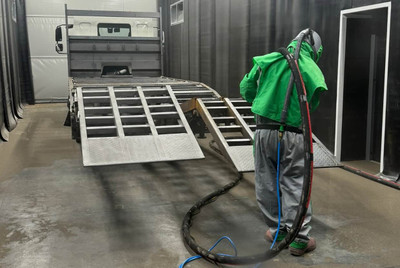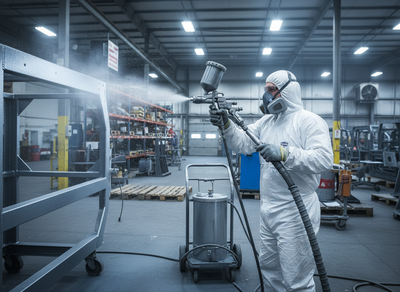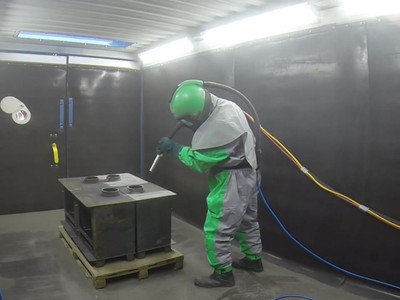13th Aug 2025
Noticing a drop in blasting efficiency? Even small issues can have a big impact on production, abrasive use, and running costs. From worn nozzles to poor air supply, here are five common reasons for reduced blasting output – and what you can do to fix them.
1. Worn nozzles and incorrect nozzle size
Abrasive nozzles wear over time. As they widen, air and abrasive usage increase without improving performance – leading to wasted energy and reduced pressure.
Fix:
- Regularly inspect and replace worn nozzles.
- Use the correct size nozzle for your air supply to maintain optimal pressure and control.
- Ensure the nozzle matches the blasting task in terms of shape and material.
Have a look at our blast nozzles on our website.
2. Inadequate air supply or pressure loss
Blasting relies on consistent, high-pressure airflow. Leaks, blockages, or undersized compressors can reduce pressure, slowing abrasive velocity and cleaning power.
Fix:
- Check for leaks in hoses, couplings, and fittings.
- Ensure your compressor delivers enough CFM for the nozzle being used.
- Maintain clean filters and well-sized air lines.
It is important to understand longer hoses require higher pressures to run. To ensure that the pressure is accurate, test the blasting pressure at the nozzle.
View our compressor hoses and fittings on our website.
3. Poor abrasive quality or contamination
Low-quality or contaminated abrasive can clog systems, damage equipment, and reduce cutting power – leading to inefficient surface cleaning and higher consumption rates.
Fix:
- Use the correct abrasive for the material and specification.
- Store abrasive in dry, sealed containers to prevent contamination.
- Sieve or recycle abrasive where possible to remove debris and dust.
Explore our range of abrasive media on our website.
4. Incorrect blasting technique or operator fatigue
Inconsistent distance, angle, or movement can lead to uneven surface preparation and wasted abrasive. Fatigue or lack of training often contributes to poor blasting output.
Fix:
- Train operators in correct technique, including optimum angle and distance.
- Rotate tasks to reduce fatigue and ensure quality is maintained throughout the shift.
- Monitor output and adjust methods based on surface requirements.
5. Lack of preventative maintenance
Small equipment issues – left unchecked – often lead to bigger problems that compromise blasting efficiency. A blocked metering valve or malfunctioning deadman handle can bring production to a halt.
Fix:
- Follow a regular maintenance schedule for all blasting equipment.
- Document servicing and replace consumables before failure occurs.
- Don’t overlook minor faults – investigate and resolve them early.
At Airblast, we offer expert servicing for a wide range of blast equipment and facilities, helping you stay compliant, extend equipment life, and minimise costly downtime. Our experienced team carries out thorough inspections, preventative maintenance, and tailored servicing plans to suit your needs. You can schedule your servicing with us by emailing servicing@airblast.co.uk.
Final thoughts
Optimising blasting efficiency doesn’t always require major investment – often, it's about identifying small issues before they escalate. With regular checks, proper training, and the right abrasive and equipment choices, you can improve blasting output and avoid costly downtime.
Need help reviewing your blasting setup or sourcing reliable equipment and consumables? Contact us – we’re here to help.




